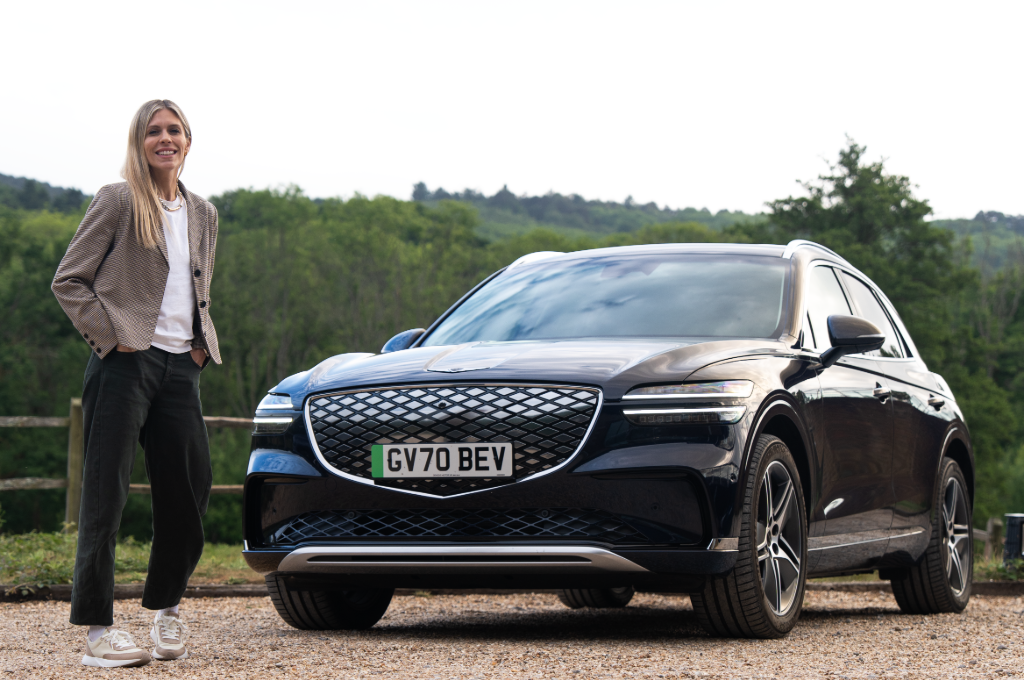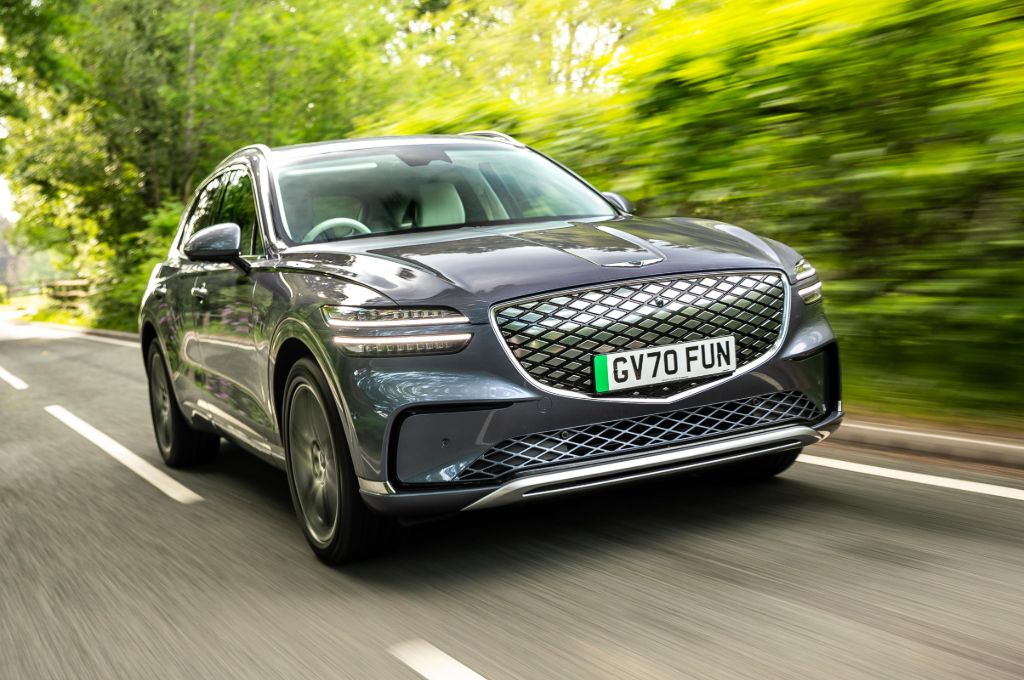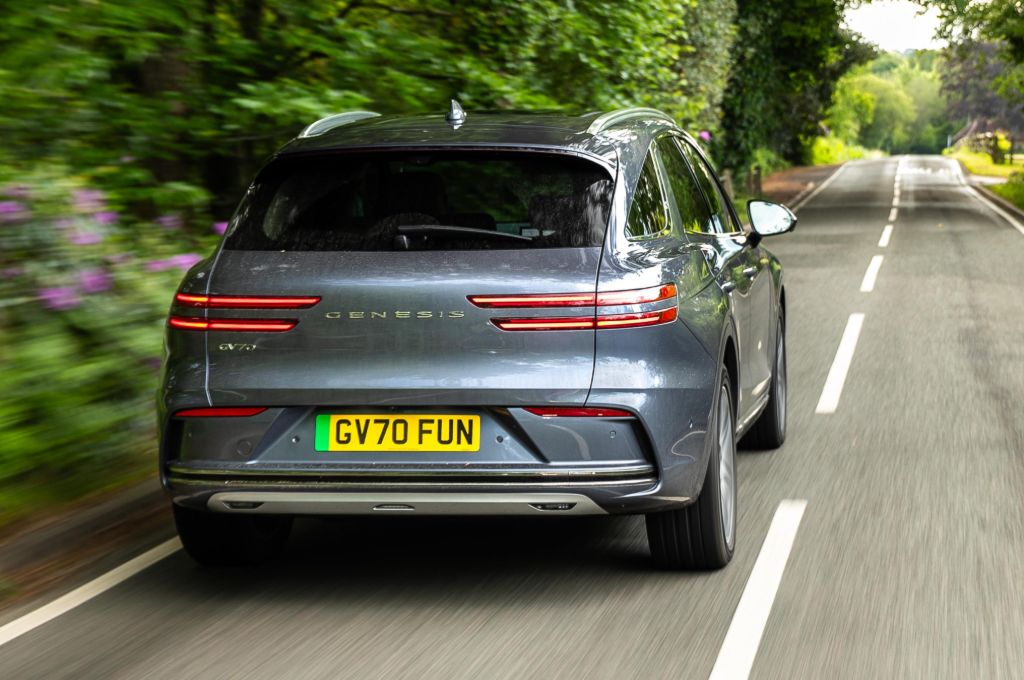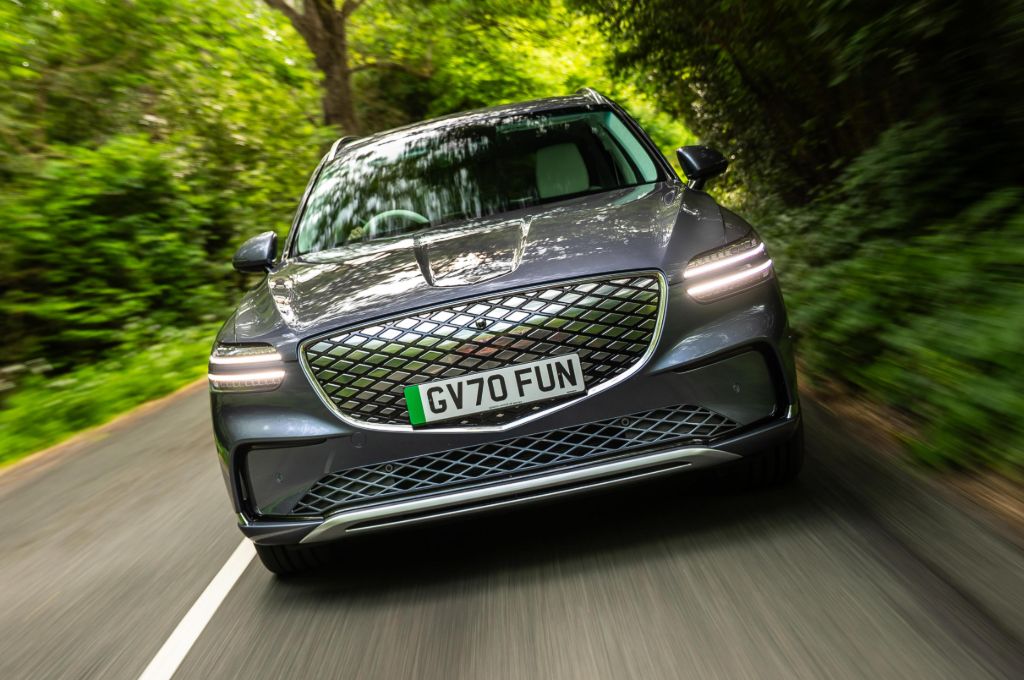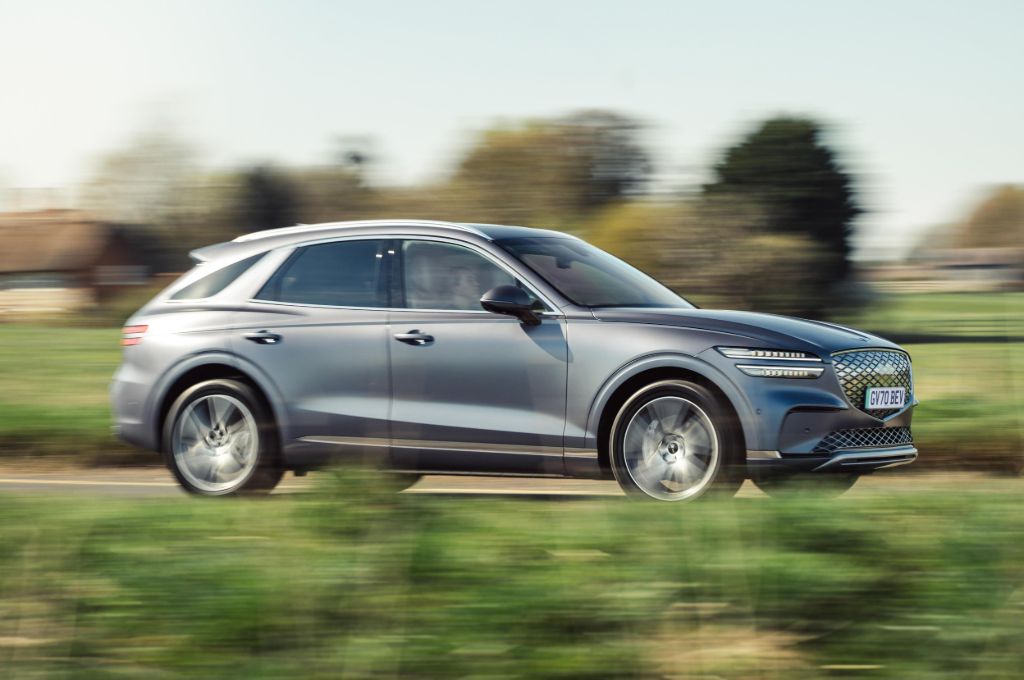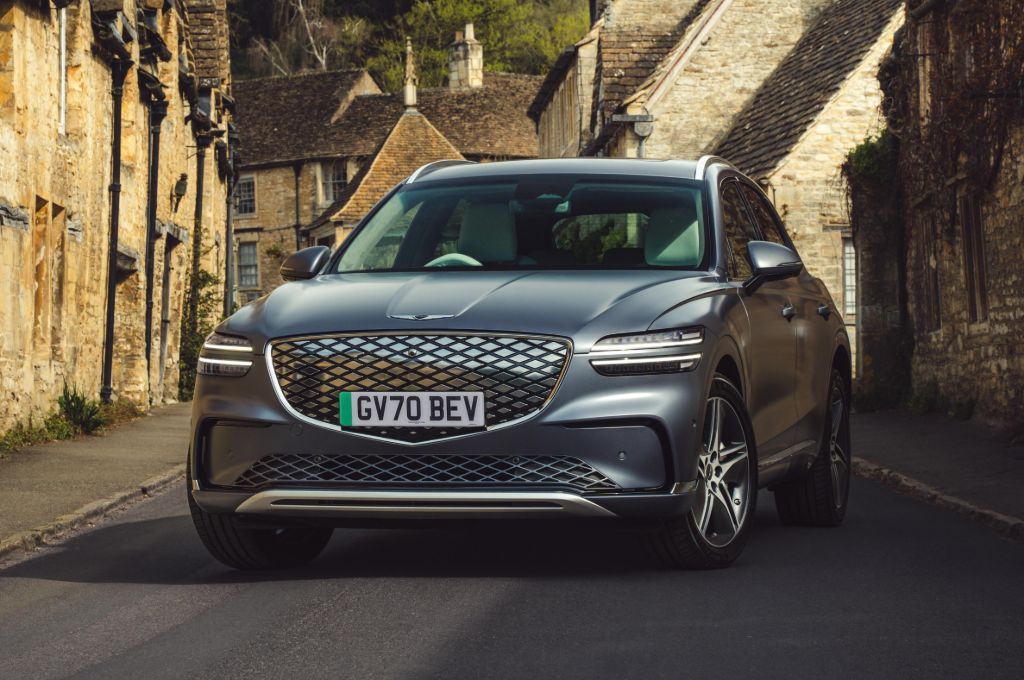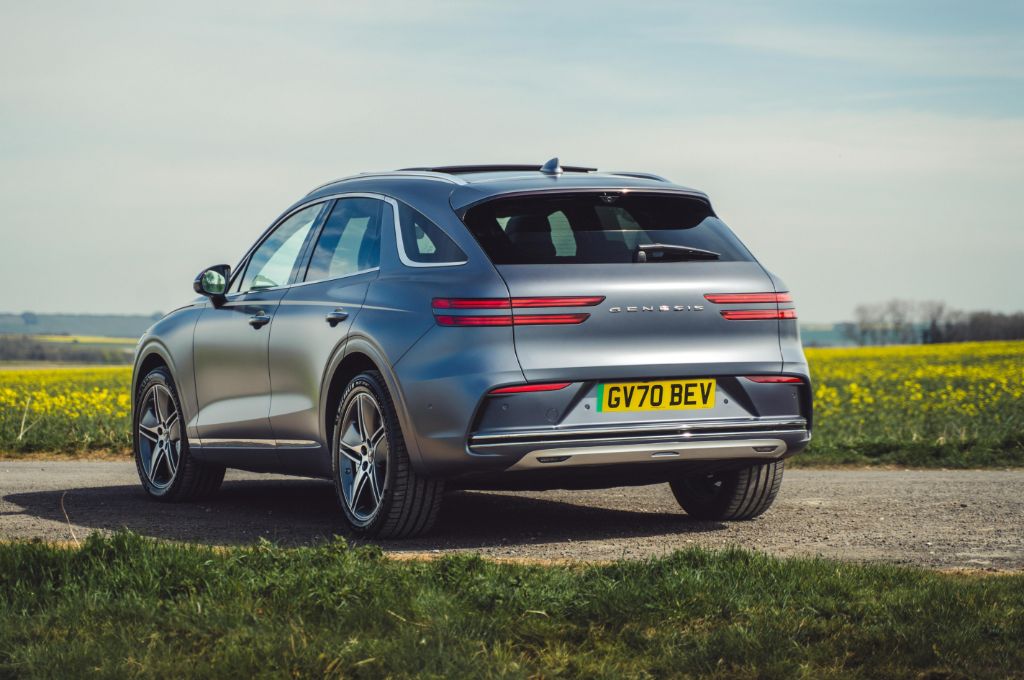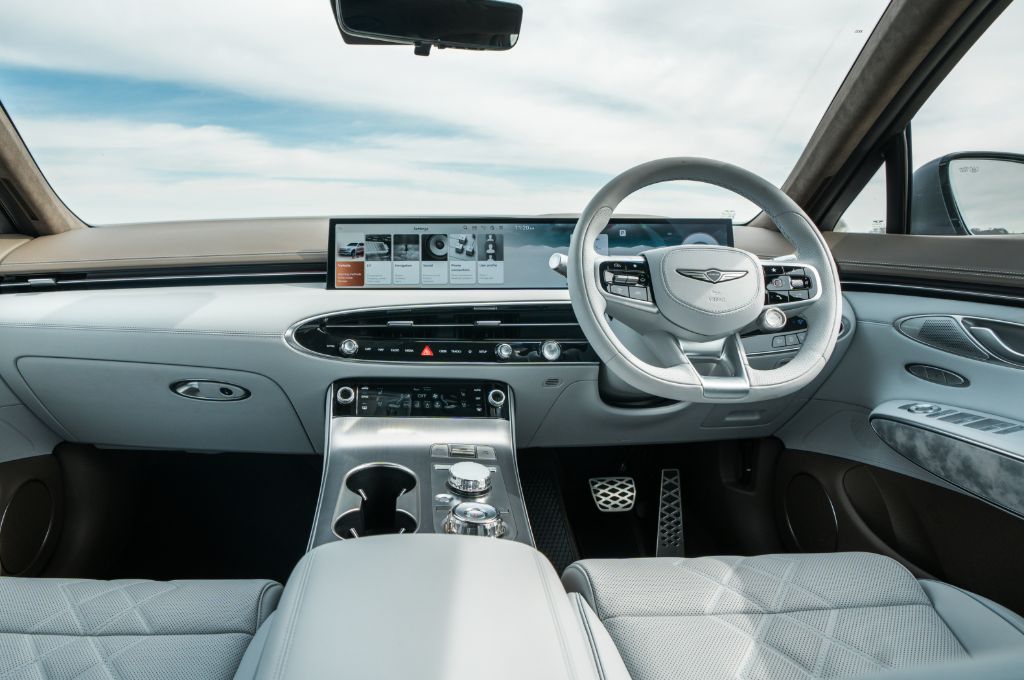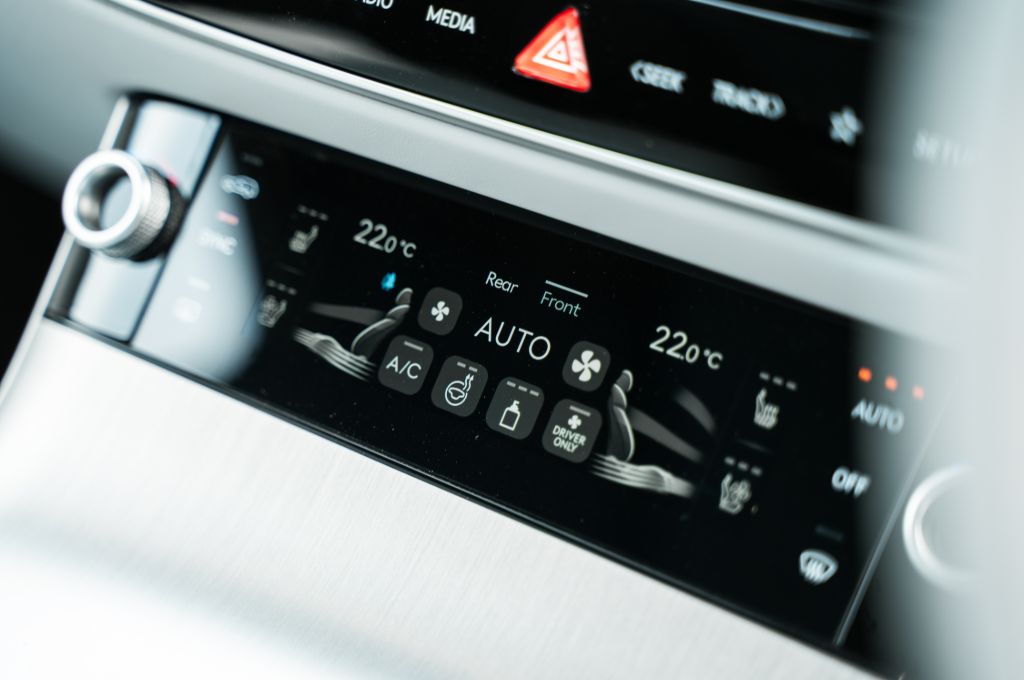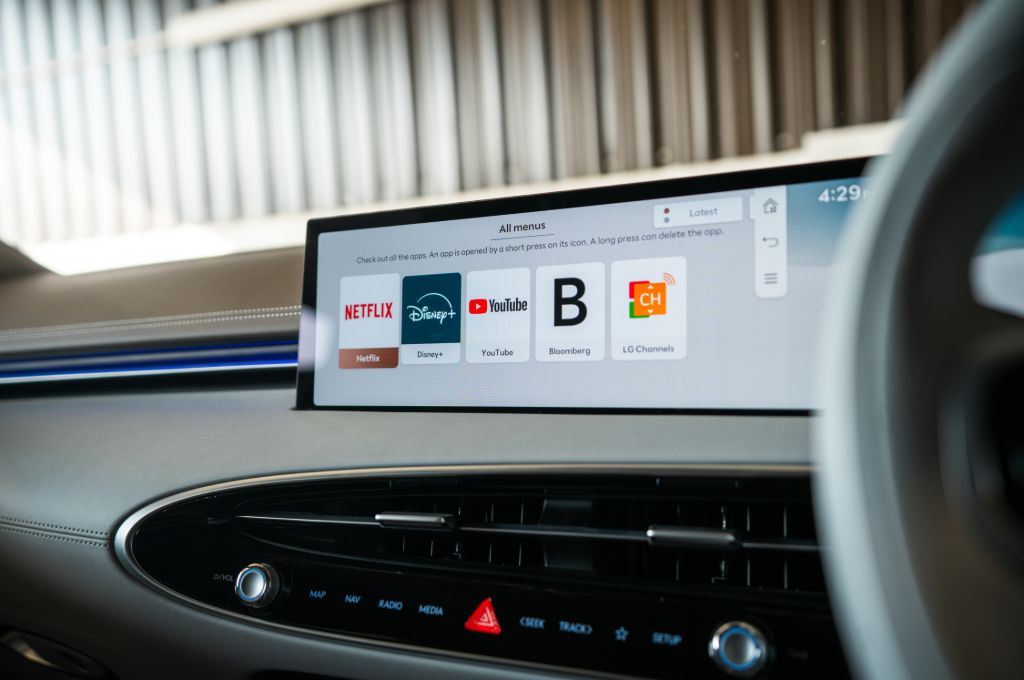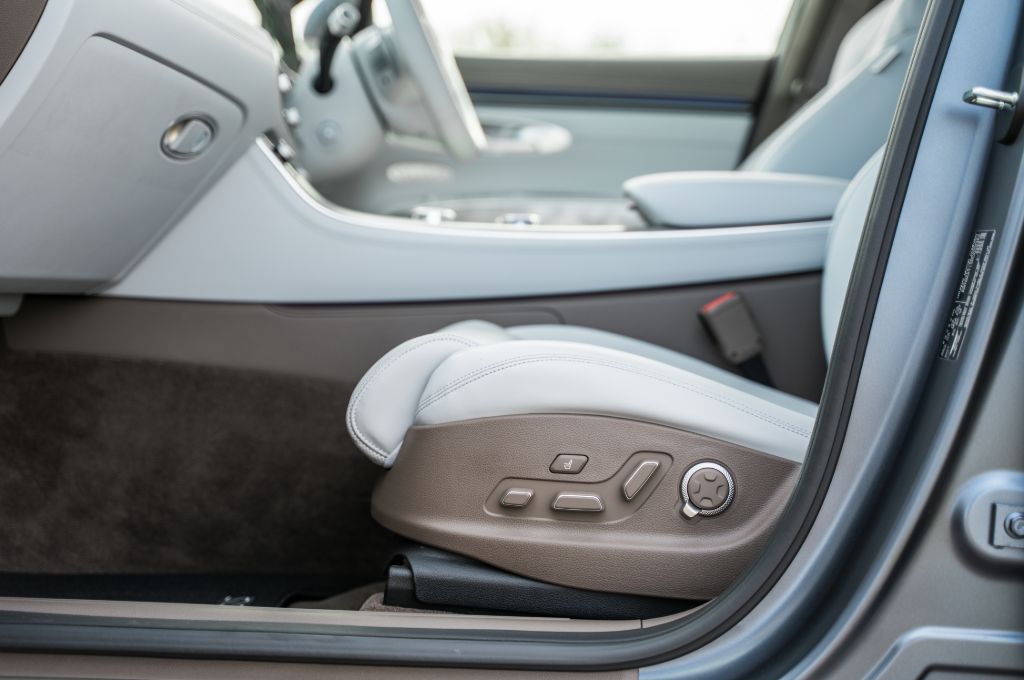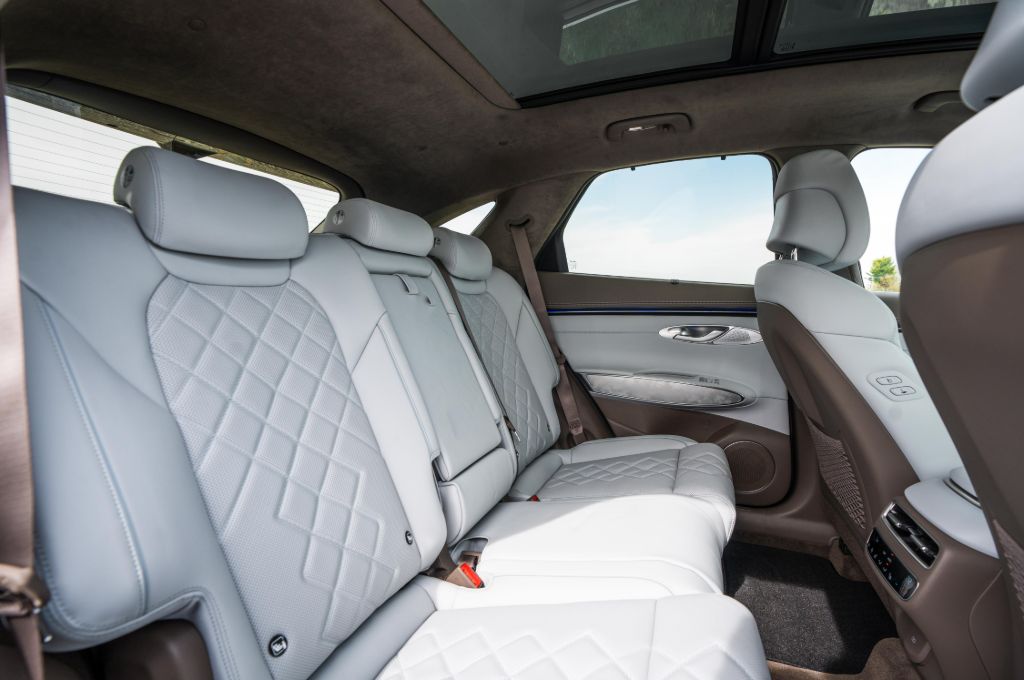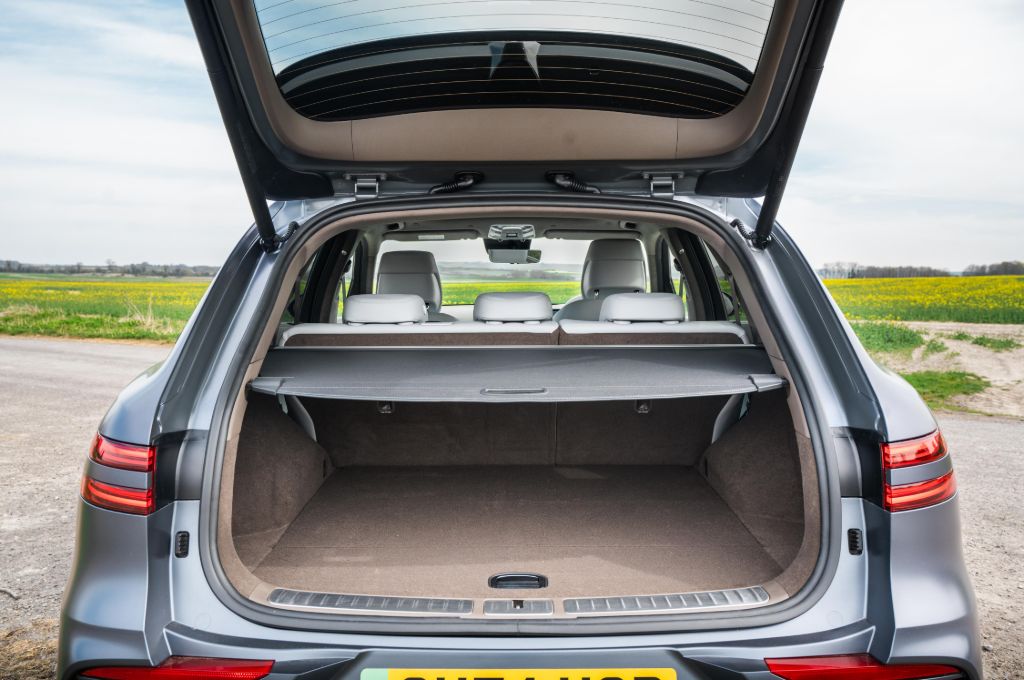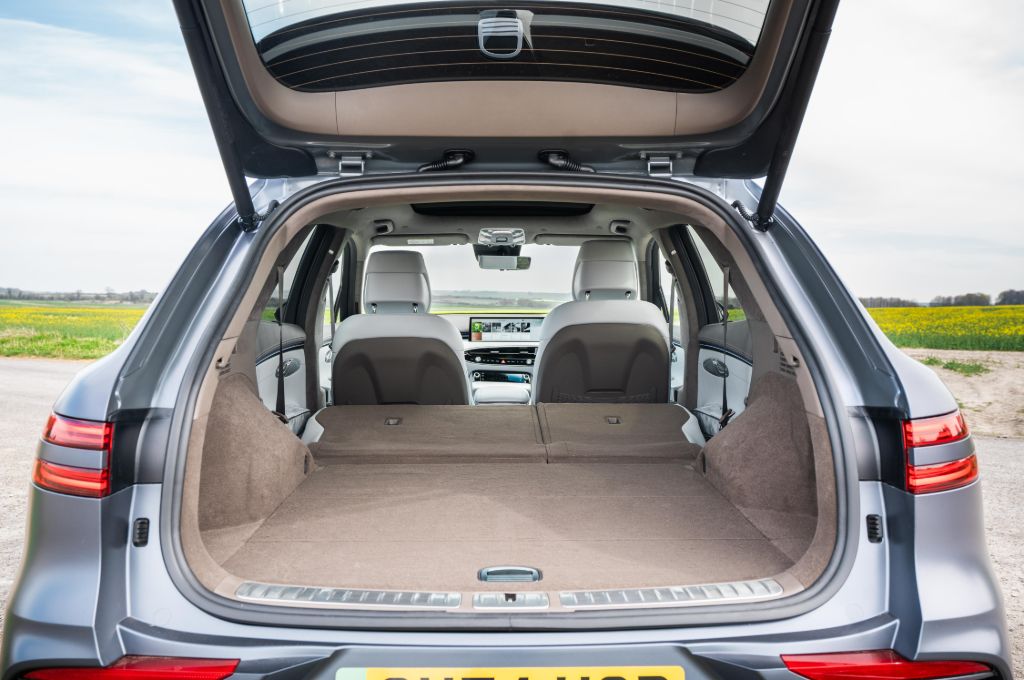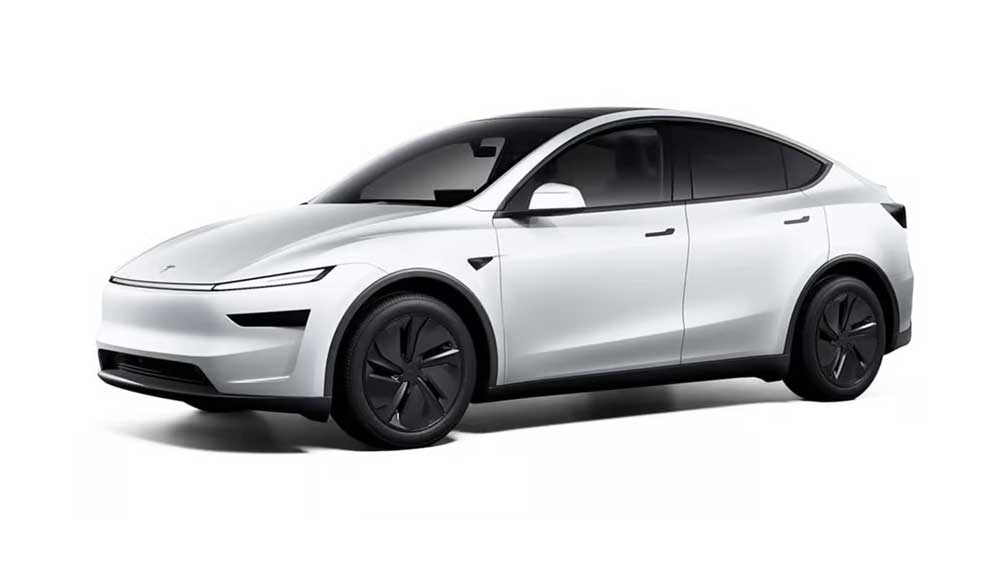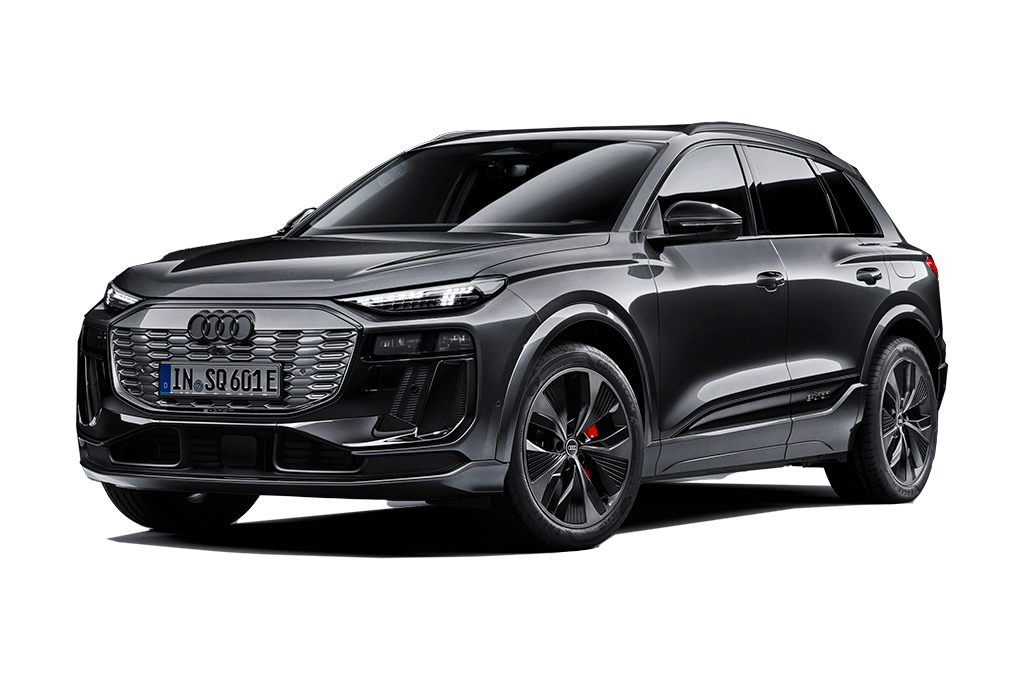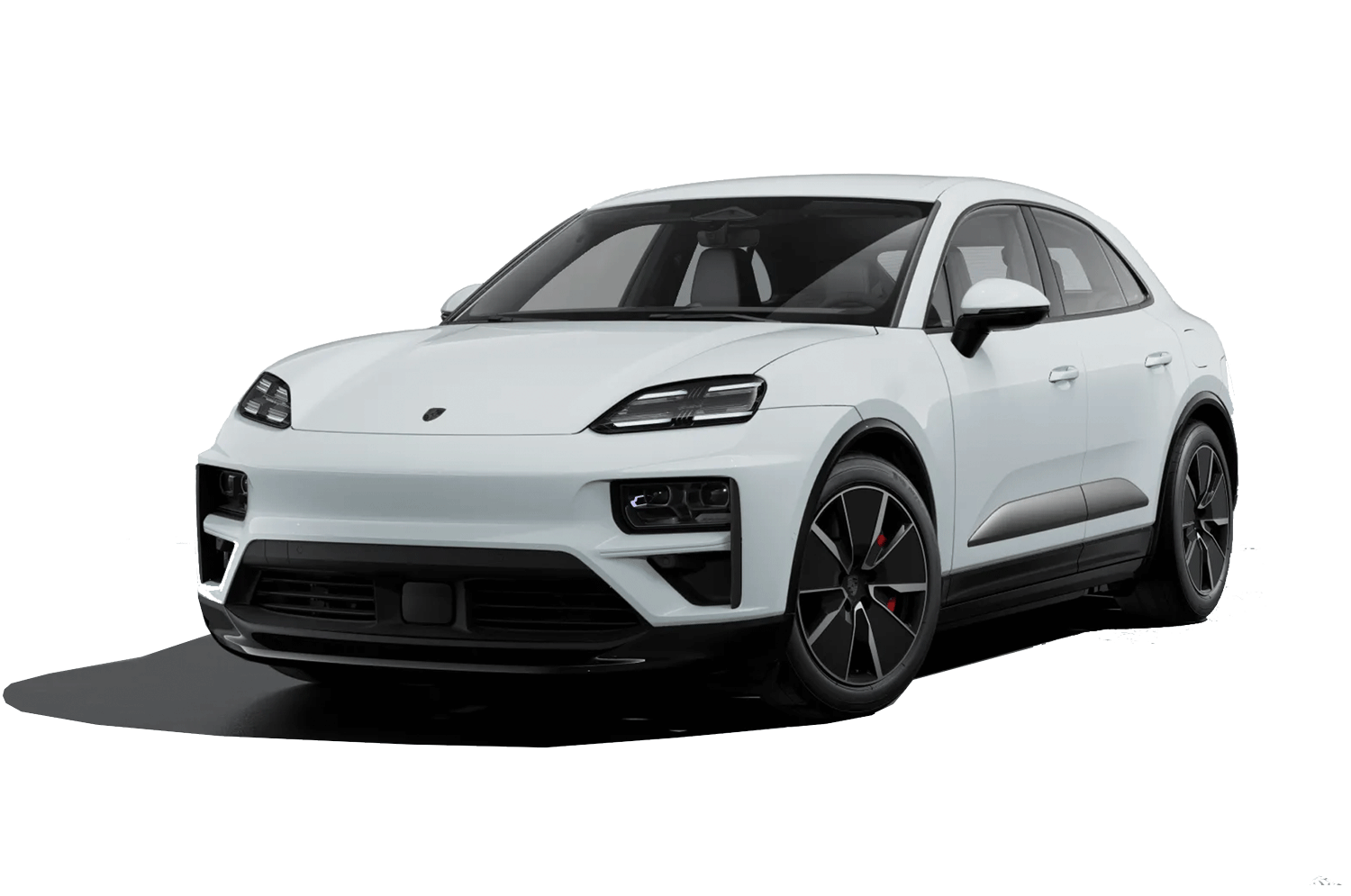Introduction and model history
The Genesis GV70 arrived in 2020 and has proved a popular car in North America and Genesis’ home market in Korea. The pure electric GV70 Electrified version was added to the brand’s UK range not long after that, and competes directly with cars like the BMW iX3, Audi Q6 e-tron and Porsche Macan, not to mention with cheaper alternatives like the Tesla Model Y and Smart #5. That's not an easy class to compete in, but Genesis has priced the GV70 competitively given the amount of standard equipment and luxuries that it gets - not to mention ownership perks like the five year, unlimited mileage warranty and five year's free servicing (up to 50,000 miles), guaranteed courtesy car, free collection and delivery of your car when it needs a service or maintenance... This convenience factor is the real unique selling point for Genesis, but the GV70 Electrified still has to make sense next to some of the most popular luxury electric cars out there.
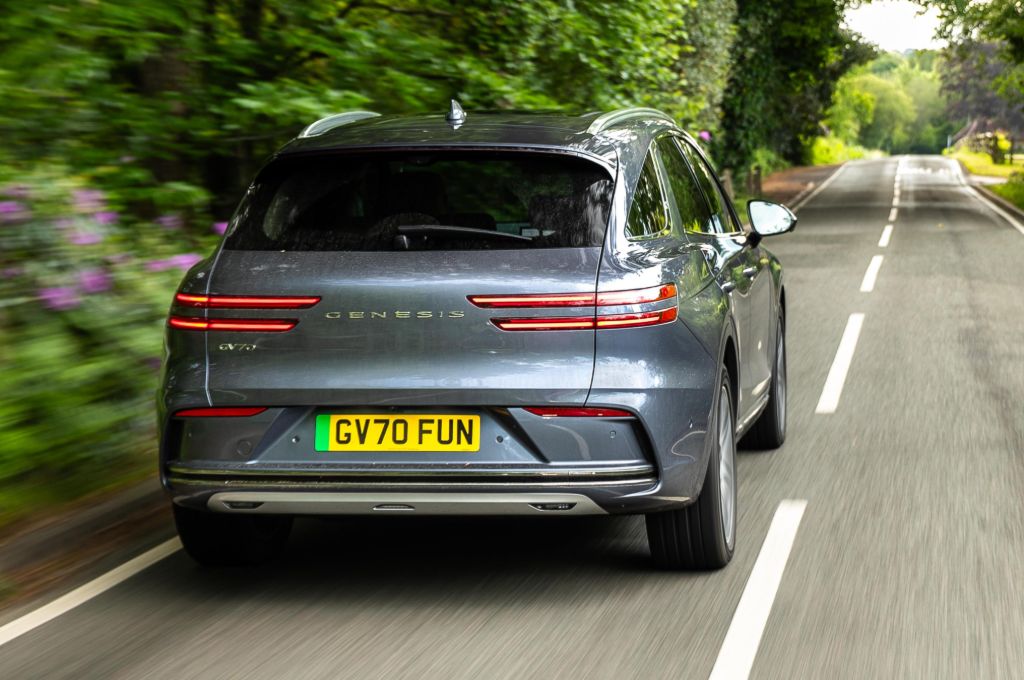
That's where the 2025 facelift comes in, bringing a bigger 84kWh battery for a longer range, tweaked styling and an even more luxurious interior finish. D'you know what? I really like it - from the way it drives to the usability of the interior, I reckon it makes a lot of sense. It's like the thinking person's posh SUV. Almost what you might expect a modern Saab to be, if Saab were still around.
So, read on to find out why I rate it so highly, and check out Nicki's video for a proper look around the Genesis Electrified GV70.
Battery, range and charging
The Electrified GV70 is only offered with one battery - an 84kWh lithium-ion NMC pack that gives the GV70 a WLTP range of up to 298 miles. I haven't spent enough time with the Genesis Electrified GV70 to give you a real world efficiency figure, but I'd estimate that you'll see around 2.8 - to 3.2 miles per kWh depending on conditions, for a real-world range of roughly 230- to 260 miles. When I've had a bit more time with the car, i'll update this review with a more accurate figure! It has to be said that you get a much longer claimed range in the Tesla Model Y and Audi Q6 e-tron, so the Genesis does feel a bit behind-the-times on that front. It's still a decent range that will be more than enough for most drivers, and the rapid charging goes some way to offsetting any range anxiety.
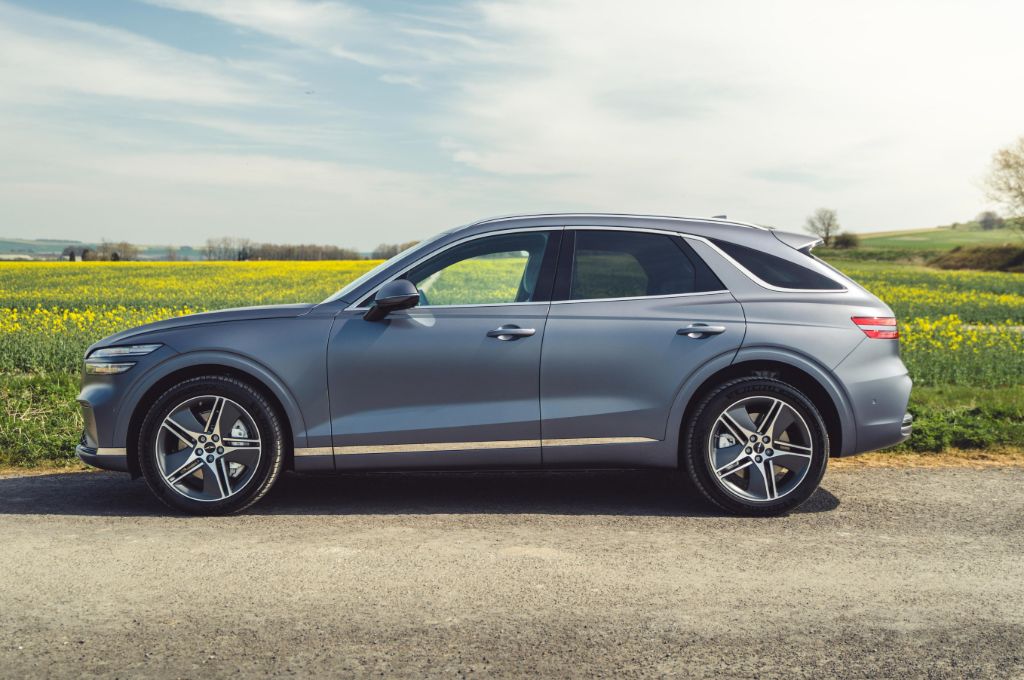
Speaking of which, the Genesis gets 800V architecture - just like the Hyundai Ioniq 9 and Kia EV9 that the GV70 also competes with - so it can charge at up to 240kW, which means an official 10-80% charge time of just 18 minutes. As we know, conditions have to be perfect to achieve close to that but we did see our test car sucking energy down at 200kW with ease, adding 40 miles of driving in just six minutes.
You do get a heat pump as standard, and you can also specify a vehicle-to-load (V2L) charging package. This will let you power any electrical device from the GV70's high voltage battery, using an adaptor in the charging sockets placed in the car's nose, or via a three-pin socket in the car’s boot. Need to charge up your e-bike, or power that portable fridge while you're camping? This tech makes all of that stuff really easy.
Practicality and boot space
The GV70 is a fairly big car at 4.7-metres long, and thankfully its exterior dimensions translate into plenty of space on board. Those in the front seats have acres of room in every direction, even with the chunky centre console between them, and the endlessly adjustable memory seats mean drivers of all shapes and sizes will be able to get comfortable.
Rear space is similarly generous, even behind a tall driver. The back seats recline and even with the panoramic roof and slightly sloping ceiling only the ridiculously tall will struggle for headroom. Four adults will easily be able to cover long distances in serious comfort.
The GV70 can seat five but the middle passenger will feel like they got the short straw. The cushion is not only narrower than the two outer seats but it’s shorter too, offering less leg support.
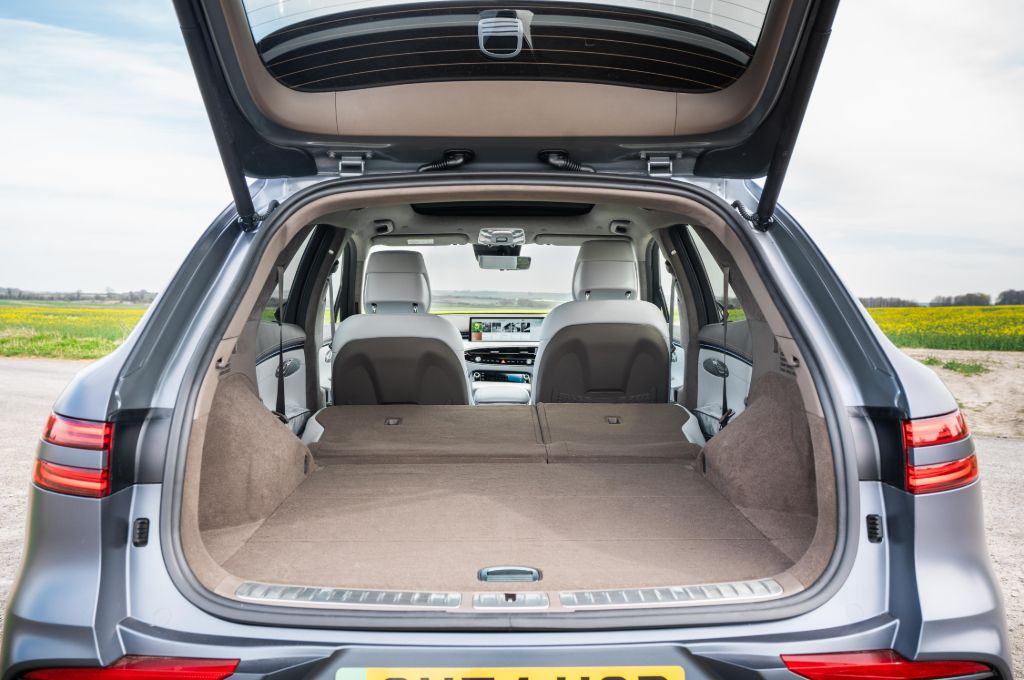
Behind those seats, there’s 503 litres of boot space - virtually identical to that offered by the Genesis’s key rivals. That’s 37 litres less than the ICE versions of the GV70 but the Electrified pulls a bit back with a 20-litre frunk that’s ideal for storing charging cables. Folding down the 60/40 split rear bench expands the storage space to 1,678 litres, accessed via a standard-fit powered tailgate.
Design, interior and technology
The premium SUV segment isn’t always praised for its taste or subtlety, so Genesis has played things nicely with the GV70, doing enough to stand out without going over the top. All Genesis models, saloon or SUV, share the same basic design principles but the GV70 is one of the most handsome thanks to its well-judged proportions. At the front the massive “crest” grille with its diamond motif gives the Genesis a unique identity even in a segment where big faces are de rigueur. The grille also features probably the neatest charge port integration around - the diamond-shaped door disguised perfectly in the grille’s criss-crossing pattern.
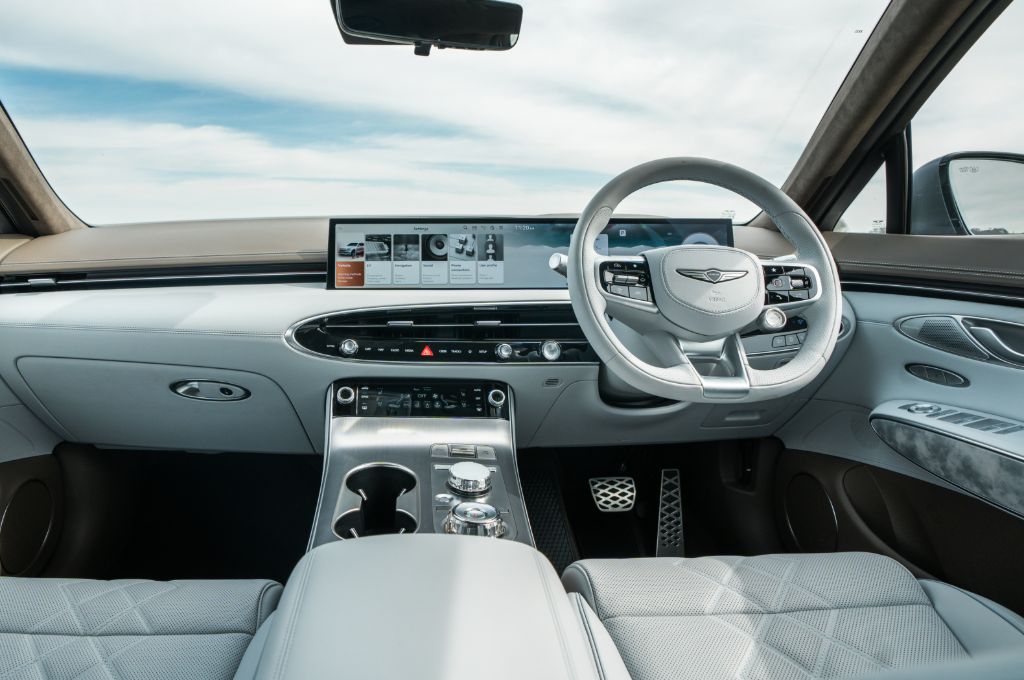
Either side of the grille are slimline split-level LED headlights whose shape are echoed in the equally neat quad tail lights which wrap around the rear flanks and stretch almost to the centre of the tailgate. A couple of sharp creases along the wings and doors link the two sets of lights and stop the GV70 from looking too slab-sided, while softer curves, especially around the nose and tailgate, mean the GV70 looks assertive without veering into aggressive. Compared with the fussy styling of the BMW or the bland melted-plastic look of the Merc, the Genesis strikes a nice balance. The 2025 facelift also brought about a few tweaks and improvements, although at a glance you may struggle to spot the differences on the facelifted car.
Genesis talks about the “beauty of white space” at play in the GV70’s interior, using reductive design to help create a feeling of spaciousness without embracing the austerity of Volvo or Tesla - who seem on a mission to take minimalism to extremes.
There’s an organic curved look to everything that’s a welcome change to the sharper edges of something from BMW or Audi. The leather-topped dashboard flows smoothly from door top to door top and sweeps over the instrument pod, while everything from the air con control panel to the glovebox handle has a soft rounded finish.
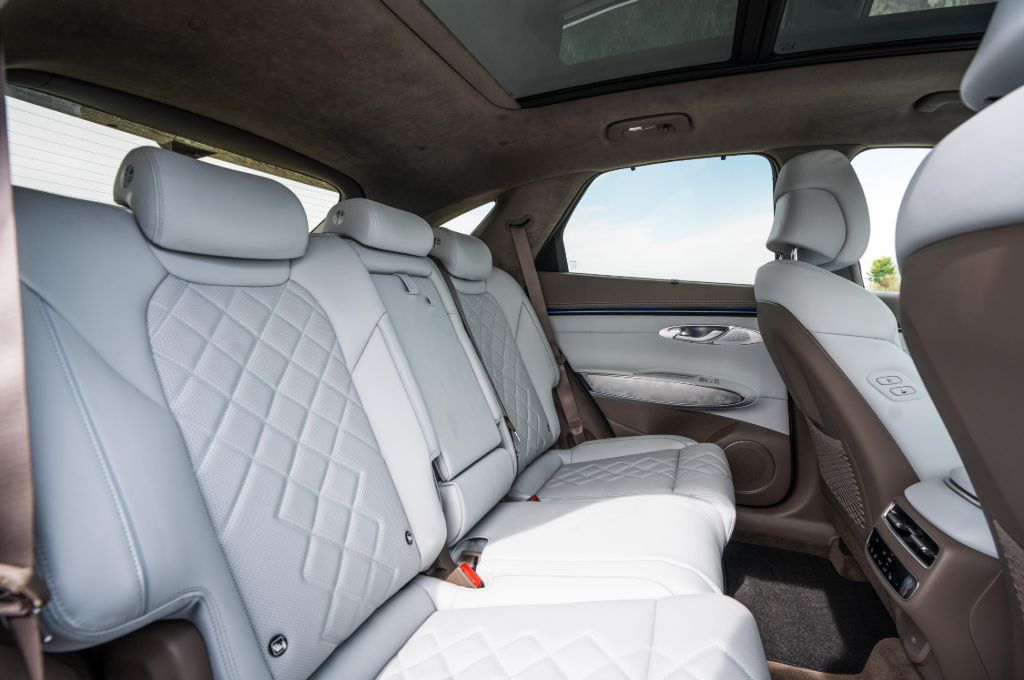
That soft look is matched by soft-touch finishes wherever you’d want them and complemented by a robust, high-quality feel from all the switches and controls. Thankfully, there are plenty of switches and controls too. Although it talks of reductive design, Genesis has sensibly left simple physical controls for important features such as the climate control, drive modes and volume, while many of the driver assist systems are managed by well-conceived steering wheel buttons.
The 2025 facelift brought a new, integrated driver's readout and infotainment screen so that you have one, sleek panoramic readout across the dash. It looks really smart, and the system is easy to use thanks to shortcut buttons and the option of using a rotary controller to move about the screen, or simply using the touchscreen itself. It's all very sharp and responsive, and you get over-the-air software updates as well as standard Android Auto and Apple CarPlay.
Genesis might be part of the Hyundai family but, as mentioned above, the mixture of leather, wool, metal and glass around the cabin mark it out as a completely different prospect and one well-equipped to compete at the premium end of the market. Go for the Nappa leather package and the already high-end seats are finished in a sumptuous quilted material.
Tick another option box and you’ll end up with 18-way electrically adjustable seats with heating, ventilation and a massage function. These also feature Genesis’s smart posture assist, which subtly adjusts the seat and activates the massage function to stop your back going stiff on long journeys. The same option pack adds heated seats for your rear passengers, who can also benefit from their own third climate control zone.
To make sure everyone on board is suitably relaxed, the GV70 features acoustic laminated glass and active noise cancelling which uses the car’s sound system to effectively block out external noise. It means that even at motorway speeds, the GV70’s interior is as quiet as a library, so you can fully appreciate the bespoke sound stages of the Lexicon stereo.
Motors, performance and handling
The biggest complaint about the petrol versions of the GV70 were that the engines weren’t smooth or quiet enough to match its premium pretensions. The Electrified version addresses that with aplomb, bringing the luxury-level refinement the rest of the car deserved.
There’s only one drivetrain available, a twin-motor, four-wheel-drive setup shared with the GV60. In the GV70 this produces 430bhp in normal conditions, with 483bhp available for short periods when the boost button on the steering wheel is pressed.
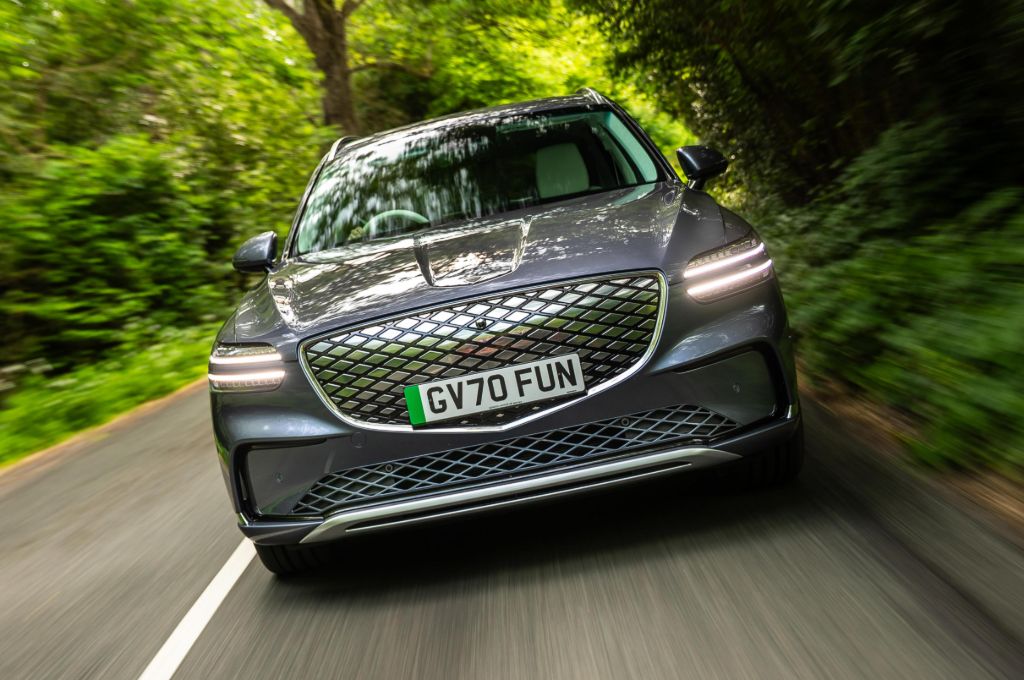
Even in this 2.3-tonne SUV, that means a 0-62mph time of 4.2 seconds and a top speed of 146mph. That’s not quite enough to keep up with the monsters of the segment, such as the Kia EV6 GT or the Ford Mustang Mach-e GT, but the GV70 is a different beast, built more for quick but calm progress than B-road shredding.
That being said, the Sport mode does unlock a surprising level of performance. Select it and throttle response, power delivery and the steering speed sharpen noticeably. The steering isn’t the most communicative but there’s enough feedback to breed confidence in the car, enhanced by plenty of grip. The adaptive air suspension also stiffens up and improves on the already impressive body control, meaning you can cover cross-country routes with remarkable rapidity.
Dial the drive modes back to Comfort or Eco and you’ll get exactly what you expect. There’s a clear step down in performance in Eco, while Comfort is where you’ll likely spend most of your time. There’s still plenty of power on tap but a calmer overall feel that’s more suited to the car’s refined ambience. And the suspension, which impresses even in Sport mode, becomes truly cosseting thanks to technology that scans the road ahead and adapts to upcoming lumps and bumps.
There’s also an e-terrain mode with three settings which alter the GV60’s all-wheel-drive powertrain to handle mud, sand or snow, should you ever encounter such hazards.
Along with that and the regular preset drive modes, the GV70 offers five levels of brake regen', which is selected via large paddles behind the steering wheel - from zero right up to full one-pedal driving, referred to as “i-pedal”, plus a smart adaptive setting. The progression between the levels is smooth and the i-pedal works brilliantly, meaning you rarely need to go near the brake pedal. The only issue is that it resets to level 3 whenever you switch off the car, but a long pull on the paddle will reactive i-pedal. It’s frustrating to have to do this every time but at least the solution is a simple one rather than being buried in a touchscreen menu.
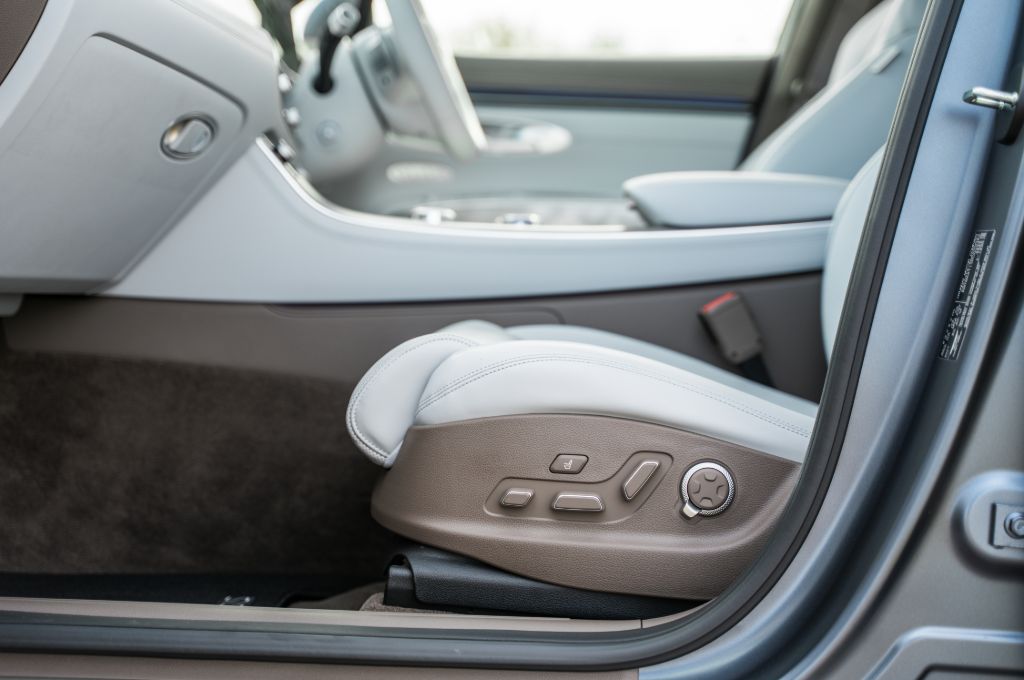
Running costs and pricing
As you would expect from a high-end modern car, the GV70 scored a maximum five stars in Euro NCAP testing, with a 89% score for adult occupant protection and 87% for child occupants.
It also scored 87% for its safety assist systems, of which there is no shortage. Standard kit includes adaptive cruise control and lane keep/follow assist that work together to form the Highway Drive Assist feature. There’s also forward collision avoidance assist that covers normal driving and junctions, warning if you’re about to turn into the path of oncoming traffic.
Standard specification is generous even on entry-level Pure trim, but the Genesis Electrified GV70 Dynamic (which costs over £70,000) adds head-up display, 20-inch alloy wheels, blind-spot warning and more. The top-spec Luxury model pushes the price up to around £75,000 and adds a panoramic sunroof, heated rear seats and ventilated front seats. A perfume diffuser and massage seats are among some of the new optional features you get with the 2025 update.
Overall, the Electrified GV70 does offer more kit for the money than most of its rivals (although not if you consider the cheaper and longer-range Tesla Model Y an alternative). But it's still a seriously pricey car, so it'll come down to monthly finance and lease deals as to how successful it'll be. Given that the facelift hasn't changed a huge amount (that infotainment is one of the biggest improvements), retail buyers would be wise to consider a used or nearly-new Genesis Electrified GV70 instead. After all, that five year warranty and servicing is transferrable, and the used prices are great, so check out the examples you can find for sale on Electrifying.com.
GV70 verdict
The GV70 is arguably Genesis’s best all-round car and the Electrified GV70 is the best version of that car by some margin. Its impressive drivetrain brings the refinement and performance that the car deserves, packaged with a decent real-world range and ultra-rapid charging. And it balances on-road sportiness when you want it with a serene ability to waft along.
On top of that, the interior is a spacious, well-equipped and user-friendly environment where passengers can relax, isolated from the trials and tribulations of the outside world thanks to smart noise management and impressive ride quality. The big issue is the price... Yes, you get a lot of convenience and luxury with the GV70, but when a Tesla Model Y costs so much less it's not hard to see why the GV70 remains a left field option despite its evident strengths. I actually really enjoy this car, and I'd love to live with it. But at this price? That makes it a tricky one to justify no matter how much you like it.
Like the Genesis Electrified GV70? Try these...
Want all the latest electric car news, reviews and videos? Sign up to the Electrifying newsletter, and don't forget to check out the Electrifying podcast.










